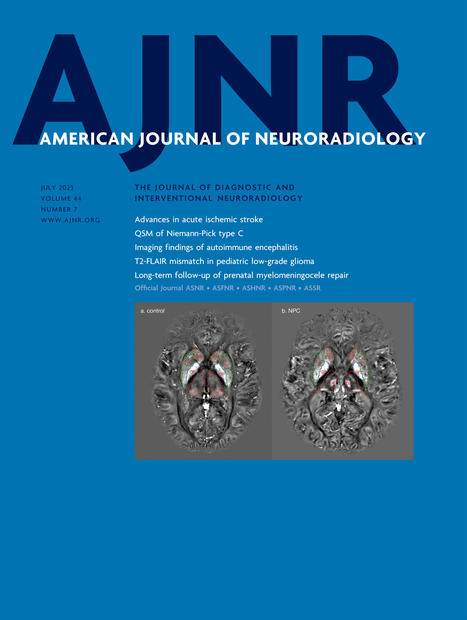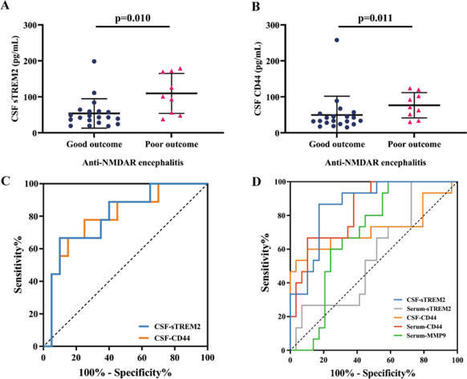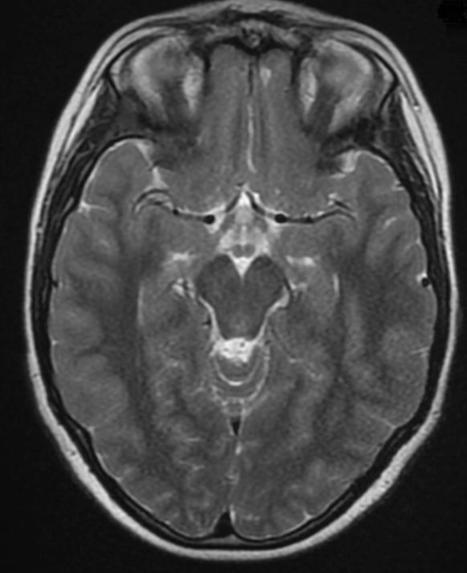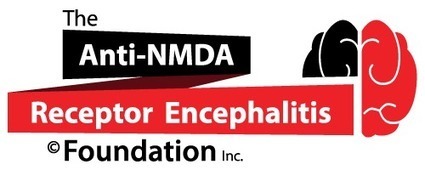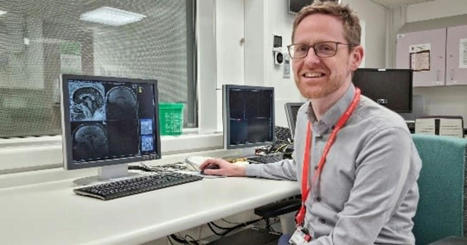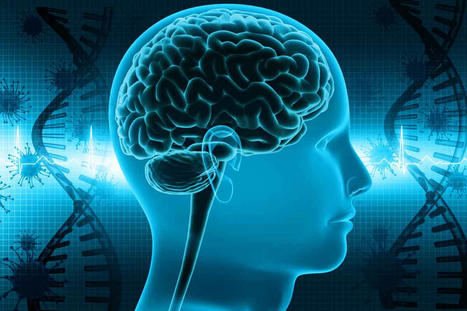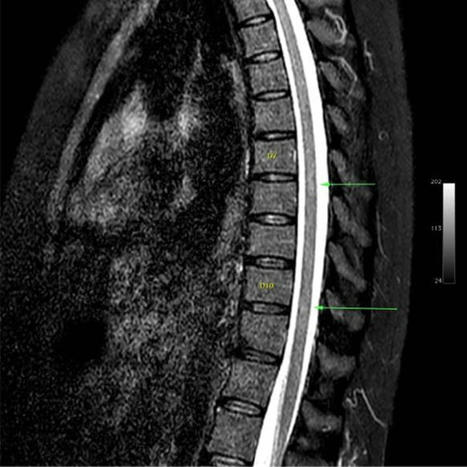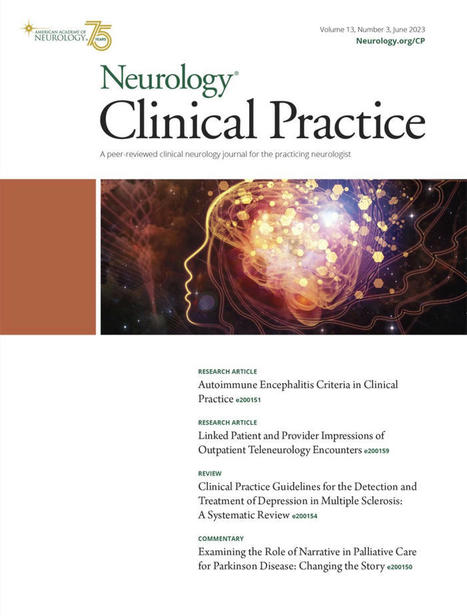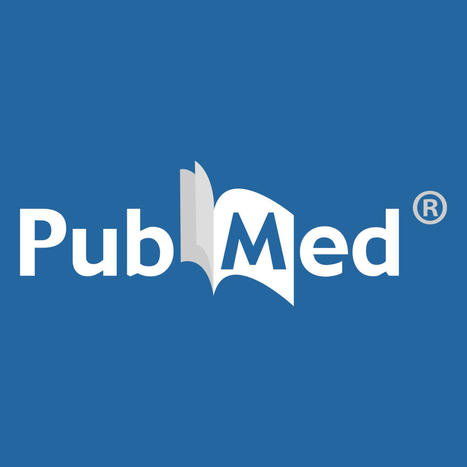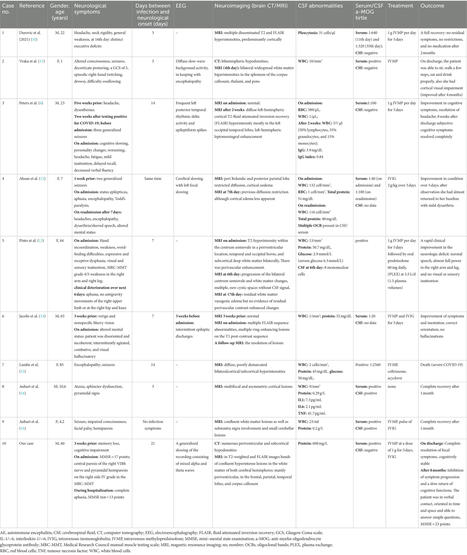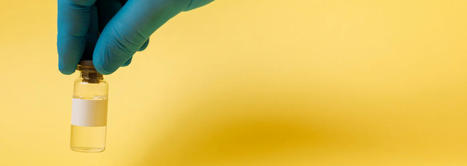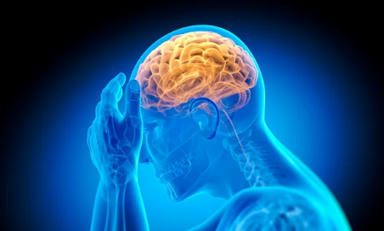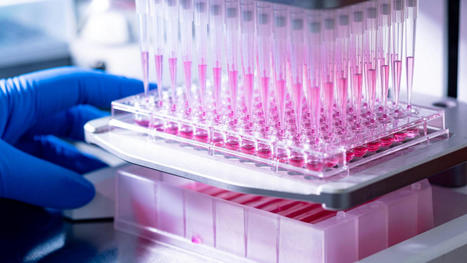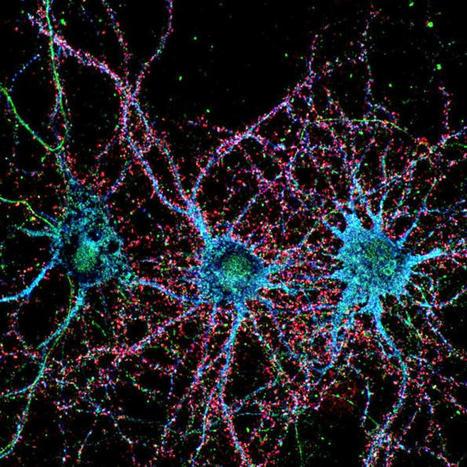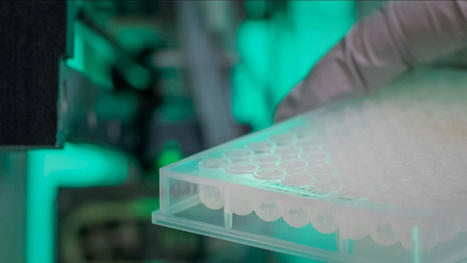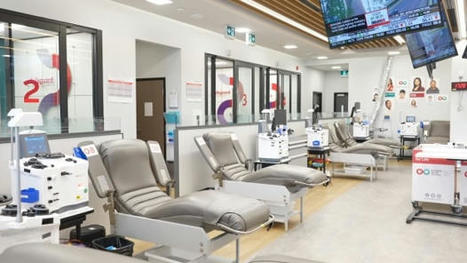Abstract Objective The aims of this study were (1) to describe the incidence of autoimmune encephalitis (AIE) and acute disseminated encephalomyelitis (ADEM) in children, (2) to validate the currently used clinical criteria to diagnose AIE, and (3) to describe pitfalls in the diagnosis of pediatric autoimmune (AI) and inflammatory neurologic disorders. Methods This study cohort consists of 3 patient categories: (1) children with antibody-mediated AIE (n = 21), (2) children with ADEM (n = 32), and (3) children with suspicion of an AI etiology of their neurologic symptoms (n = 60). Baseline and follow-up clinical data were used to validate the current guideline to diagnose AIE. In addition, patient files and final diagnoses were reviewed. Results One-hundred three of the 113 included patients fulfilled the criteria of possible AIE. Twenty-one children had antibody-mediated AIE, of whom 19 had anti-N-methyl-D-aspartate receptor (NMDAR), 1 had anti–α-amino-3-hydroxy-5-methyl-4-isoxazolepropionic acid receptor, and 1 had anti–leucine-rich glioma-inactivated protein 1 encephalitis. Finally, 34 children had ADEM, and 2 children had Hashimoto encephalopathy. Mean incidence rates were 1.54 children/million (95% CI 0.95–2.35) for antibody-mediated AIE and 2.49 children/million (95% CI 1.73–3.48) for ADEM. Of the other 48 children, treating physicians' diagnoses were reviewed. In 22% (n = 6) of children initially diagnosed as having an AI/inflammatory etiology (n = 27), no support for AI/inflammation was found. Conclusion Besides anti-NMDAR encephalitis and ADEM, other AIEs are rare in children. The current guideline to diagnose AIE is also useful in children. However, in children with nonspecific symptoms, it is important to review data critically, to perform complete workup, and to consult specialized neuroinflammatory centers. Glossary ADEM=acute disseminated encephalomyelitis; AE=autoimmune etiology; AI=autoimmune; AIE=autoimmune encephalitis; AMPAR=α-amino-3-hydroxy-5-methyl-4-isoxazolepropionic acid receptor; CBA=cell-based assay; CHANCE=Children's Autoimmunity Related to Neuropsychiatric symptoms, Chorea and Epilepsy; FBDS=faciobrachial dystonic seizures; GAD65=glutamic acid decarboxylase 65; HSVE=herpes simplex virus encephalitis; IPMSSG=International Pediatric Multiple Sclerosis Study Group; ivMP=IV methylprednisolone; LGI1=leucine-rich glioma-inactivated protein 1; MOG=myelin oligodendrocyte glycoprotein; NMDA receptor=N-methyl-D-aspartate receptor; TPO=thyroid autoantibodies Autoimmune encephalitis (AIE) has expanded the already comprehensive list of pediatric neuroinflammatory disorders of the CNS. Anti-N-methyl-D-aspartate receptor (NMDAR) encephalitis and acute disseminated encephalomyelitis (ADEM) are the most frequently described cause of AIE in children,1,–,4 and disease courses have been studied in detail, including treatment responses, functional recovery,1,4 and long-term neuropsychological outcome.5 Next to anti-NMDAR, other neuronal antibodies have been described only sporadically in children,6,–,8 whereas in adults, reported incidence of these antibodies has increased dramatically.9,10 This could indicate that besides anti-NMDAR encephalitis, neuronal antibodies occur less frequent in children or that these syndromes are unrecognized. In 2016, Graus et al.11 have described criteria to diagnose antibody-mediated AIE, ADEM, and other related autoimmune (AI) encephalitides, including Bickerstaff brainstem encephalitis, Hashimoto encephalopathy, and autoantibody-negative (seronegative) AIE, in adults and in children. These criteria allow physicians to start first-line immunotherapy in patients with typical limbic encephalitis or probable anti-NMDAR encephalitis before definite antibody diagnosis. As already stated by the authors, the criteria should be used with caution in children because the differential diagnosis is more widespread. This prospective, observational, cohort study describes the incidence of pediatric antibody-mediated AIE and ADEM in the Netherlands since 2015. In addition, the diagnostic criteria of Graus et al.11 are validated using data of prospectively collected cohorts of children with AIE, ADEM, and children with neurologic symptoms and suspicion of an autoimmune etiology (AE). Finally, we describe pitfalls in the diagnosis of pediatric AI and inflammatory neurologic disorders. Methods Patients This study cohort contains data of 3 patient groups, included between January 2015 and December 2018 in the Netherlands. The first group consists of all Dutch children, aged 0–18 years, diagnosed with antibody-mediated (definite) AIE. Antibodies were detected in serum and CSF, using commercial cell-based assays (CBAs; Euroimmun, Lübeck, Germany). Antibodies were confirmed with immunohistochemistry. All children were included after diagnosis and are being followed prospectively since. The second group consists of all Dutch children with ADEM diagnosed according to the International Pediatric Multiple Sclerosis Study Group (IPMSSG) criteria.12 who were prospectively included in the nationwide, multicenter PROUD kids study.13 The third group consists of children with a suspected AE of their neurologic symptoms. These children were prospectively included in the observational, multicenter, “Children's Autoimmunity Related to Neuropsychiatric symptoms, Chorea and Epilepsy” (CHANCE) study. The CHANCE study was a multicenter study, with national accrual, but no means to be complete. Inclusion criteria were age below 18 years at symptom onset and one of the following clinical phenotypes: (1) limbic encephalitis, (2) new-onset status epilepticus, (3) acute encephalopathy, or (4) neuropsychiatric symptoms combined with symptoms of basal ganglia dysfunction. All serum samples, and if available CSF samples, were screened for neuronal antibodies using immunohistochemistry14 and CBAs (Euroimmun, Lübeck, Germany). Questionable or positive samples were tested with conformational laboratory techniques, including live hippocampal neurons,15 in-house CBAs, and ELISA. Antithyroid autoantibodies (TPO) were detected by fluorescence enzyme immunoassay on the Phadia 250 system using EliA according to the manufacturer's instructions (Thermo Fisher Scientific, Freiburg, Germany). Data about medical history, disease course, treatment responses, and final diagnoses were collected. Data were collected from interviews with patients, from treating physicians, or were retrieved from patient files. Definitions The criteria of Graus et al.11 were used to define possible AIE, definite AI limbic encephalitis, probable anti-NMDAR encephalitis, Bickerstaff brainstem encephalitis, Hashimoto encephalopathy, and seronegative but probable AIE. The IPMSSG criteria12 were used to define ADEM. Final etiology was classified as (1) Definite AIE, including children with antibody-mediated AIE and ADEM. (2) Probable AIE, according to the diagnostic criteria.11 This category consisted of children with ADEM without follow-up MRI and of children with Hashimoto encephalopathy. (3) Possible AE/inflammatory, included children not fulfilling any of the diagnostic criteria panels, but with support for autoimmunity or inflammation. This category consisted partially of children with clinically defined acquired AE/inflammatory disorders, such as Rasmussen encephalitis or Sydenham chorea, and partially of children with MRI or CSF abnormalities pointing toward an AE/inflammatory etiology (pleocytosis, elevated protein, or oligoclonal bands in CSF, and MRI lesions in the temporal lobe), with exclusion of other causes, and not fulfilling the criteria of seronegative AIE.11 (4) Unknown etiology and no support for AE/inflammatory, including children without MRI or CSF abnormalities pointing toward and AE/inflammatory etiology. (5) Other diagnosis and no support for AE/inflammatory. R.F.N., M.J.T., and M.A.A.M.d.B. reviewed follow-up etiologies. Definite diagnoses were determined by consensus. Standard protocol approvals, registrations, and patient consents The Institutional Review Board of the Erasmus MC University Medical Center approved the study protocol (MEC- 2014-048; MEC-2005-247). Informed consent was obtained from all parents and additionally from children aged 12–17 years at inclusion. Statistics The annual incidence rate (from 2015 to 2018) was calculated with 95% CIs, assuming a Poisson distribution. Available data of the Dutch pediatric population were used (StatLine; statline.cbs.nl/statweb/). Comparisons were performed using the χ2 test or the Kruskal-Wallis test. Data availability Any data not published in this article are available at the Erasmus MC University Medical Center. Patient-related data will be shared on request from any qualified investigator, maintaining anonymization of the individual patients. Results Patient characteristics We included 113 patients. Twenty-one patients had definite AIE (19%), including 19 (90%) children with anti-NMDAR encephalitis. Among them, 12 had an idiopathic etiology (63%), 6 children recently had herpes simplex virus encephalitis (HSVE; 32%), and 1 girl had an ovarian teratoma (5%) detected shortly after disease onset. The other 2 children with neuronal antibodies had anti–leucine-rich glioma-inactivated protein 1 (LGI1) encephalitis (n = 1; 5%) and anti–α-amino-3-hydroxy-5-methyl-4-isoxazolepropionic acid receptor (AMPAR) encephalitis (n = 1; 5%). Thirty-two children diagnosed with ADEM (28%) were included from the PROUD kids cohort. The other 60 patients (53%) were included from the CHANCE study. Incidence The annual incidence rates of antibody-mediated AIE and ADEM of 4 consecutive years (2015–2018) are shown in table 1. Mean incidence rates were 1.54 children/million (95% CI 0.95–2.35) and 2.49 children/million (95% CI 1.73–3.48) for AIE and ADEM, respectively. View inline View popup Table 1 Annual incidence of pediatric AIE and ADEM Validation of AIE criteria Of all 113 patients included, 103 (89%) fulfilled the criteria of possible AIE (figure 1). Demographical data are described in table 2. Children with AIE were more often female (p = 0.023), and children with ADEM were younger (p < 0.0001). Ten patients included in the CHANCE cohort did not fulfill the criteria and were excluded because of the absence of working memory deficits or psychiatric symptoms (n = 6) or because of the longer duration of symptoms (n = 4). These 10 children had epilepsy without additional symptoms (n = 4), psychiatric disorders (n = 3), mild encephalopathy with reversible lesion in the splenium (n = 1), Niemann-Pick disease type C (n = 1), or Rasmussen encephalitis without epilepsy (n = 1). Figure 1 Flowchart showing the validation of the diagnostic criteria of AIE aAccording to the International Pediatric Multiple Sclerosis Study Group criteria. bIn 21 of the 22 patients without new lesions on the second MRI anti–myelin oligodendrocyte glycoprotein (MOG) was tested; in 8/21, antibodies were present (38%). cIn 10 of the 12 patients who had no follow-up MRI, anti-MOG was tested, of them 40% (n = 4) tested positive. dOf whom, 8 had an idiopathic etiology, and 3 recently had herpes simplex virus encephalitis. In blue: probable diagnosis, first-line immunotherapy can be started. In green: definite diagnosis. ADEM = acute disseminated encephalomyelitis; AE = autoimmune etiology; AIE = autoimmune encephalitis; AMPAR = α-amino-3-hydroxy-5-methyl-4-isoxazolepropionic acid receptor; GQ1b = Ganglioside Q1b; LGI1 = leucine-rich glioma-inactivated protein 1; NMDAR = NMDA receptor; SN-AIE = seronegative autoimmune encephalitis. View inline View popup Table 2 Demographic data and comparisons between groups Of the 103 children shown in the flowchart, 1 child had definite limbic encephalitis according to the criteria (figure e-1, links.lww.com/NXI/A197). This was a 9-year old boy who presented with tonic-clonic seizures originating in the left temporal lobe, followed by refractory status epilepticus. He was treated with valproic acid, midazolam, and phenytoin. After status epilepticus, he developed faciobrachial dystonic seizures (FBDS)16 and hyperactive behavior. He was considered to have anti-LGI1 encephalitis, later confirmed in his serum and CSF. He was treated with IV methylprednisolone (ivMP). Because of ongoing FBDS, he was treated again with ivMP and additionally with mycophenolate mofetil, which led to seizure freedom and complete recovery. The brain MRI showed demyelinating features in 34 children (33%). In all these children, encephalopathy and other symptoms appeared reversible. In 22/34 children, the brain MRI was repeated, and in none of them, new lesions were visible. These children were diagnosed as having definite ADEM (22/103; 21%). In 31/34, myelin oligodendrocyte glycoprotein (MOG) antibodies were tested. Twelve of 31 (39%) ADEM children were MOG positive, 4 children had a relapsing disease course (ADEM-optic neuritis [N = 3], and multiphasic demyelinating encephalomyelitis [n = 1]). Fourteen of the 68 remaining patients fulfilled the criteria of probable anti-NMDAR encephalitis, of whom 11 had NMDAR antibodies, whereas the other 3 had no NMDAR antibodies (table 3). Of the children with anti-NDMAR encephalitis, 8 children had an idiopathic etiology and 3 children recently had HSVE. View inline View popup Table 3 Patients without NMDA receptor antibodies fulfilling the criteria “probable anti-NMDA receptor encephalitis” Nine additional patients had neuronal antibodies, without fulfilling the criteria of probable anti-NMDAR encephalitis. Eight turned out to have definite anti-NMDAR encephalitis, of which 4 with an idiopathic etiology (50%) but with less symptoms, 3 post-HSVE (38%), and 1 girl had an ovarian teratoma triggering the antibody production (13%). The other patient was a 17-year-old girl with anti–acetylcholine receptor-positive bulbar myasthenia gravis and a thymoma, which was surgically removed. She developed severe memory problems and mood changes within days, accompanied by clinical signs of polyneuropathy. Laboratory results showed AMPAR antibodies in her serum and CSF and an elevated anti-CV2 titer in serum (>12,800). She was treated with ivMP and IV immunoglobulins resolving both the encephalitis and polyneuropathy. No patient had Bickerstaff brainstem encephalitis. All remaining 48 children with possible AIE were tested for TPO antibodies. Six of 48 children had an increased anti-TPO titer, of whom 2 met the criteria for Hashimoto encephalopathy. One of the other 4 patients (table 4) had diabetes mellitus type 1 and co-occurrence of low-titer anti-glutamic acid decarboxylase 65 (anti-GAD65), considered clinically irrelevant. View inline View popup Table 4 Patients with increased anti-TPO not fulfilling the criteria of Hashimoto encephalopathy Follow-up etiology of patients with possible AIE Nine of the 46 children (20%) were diagnosed by their treating physician with seronegative or probable AIE, whereas none of these children fulfilled the criteria of seronegative AIE. Four of these 9 children had a pleocytosis in CSF, but no MRI abnormalities in the mesial temporal lobe. In the other 5 children, brain MRI and white blood cell count in CSF were normal. However, complete CSF analysis, including immunoglobulin G (IgG) index and oligoclonal bands, was not performed. Concerning follow-up etiology based on treating physicians' diagnosis, these 46 children had (1) a possible AE/inflammatory etiology (n = 27), (2) no support for AE/inflammatory and another etiology (n = 9), and (3) no support for AIE/inflammatory and unknown etiology (n = 10). After revising the data, in 6 children (22%) initially considered as possible AE/inflammatory, no support for an AI/inflammatory etiology was found. Differential diagnosis of possible AIE In table 5, exemplary cases of the included patients with AIE and with other diagnoses are shown. These cases show overlapping features, which may suggest AIE, but also signs and symptoms pointing toward another diagnosis. View inline View popup Table 5 Mimics of autoimmune encephalitis in children27 Discussion This prospective observational cohort study shows that besides anti-NMDAR encephalitis and ADEM, the prevalence of other AI encephalitides is very low in children. Furthermore, we describe that these AI disorders show a stable incidence over the past 4 years. In addition, this study validates the criteria currently used to diagnose AIE and shows their usefulness to detect pediatric antibody-mediated AIE, ADEM, and Hashimoto encephalopathy in an early stage. In our cohort, a substantial number of children were diagnosed and treated as having an AI/inflammatory etiology of their neurologic symptoms, whereas in more than 20% of them, the support for autoimmunity or inflammation was lacking. The vast majority of children with definite AIE described in this cohort had anti-NMDAR encephalitis, whereas only 2 children had other neuronal antibodies (anti-LGI1 and anti-AMPAR). These antibodies have been described only sporadically in pediatric cases,17 next to other neuronal antibodies, including anti-gamma-aminobutyric acid B receptor,7 anti-gamma-aminobutyric acid A receptor,6 anti-glycine receptor,18 and anti-GAD65.19 The high prevalence of anti-NMDAR encephalitis in children compared with the very low prevalence of other antibodies is largely explained by epidemiologic factors. In our cohort, in more than 40% of the children with anti-NMDAR encephalitis, antibody production was triggered by HSVE or an ovarian teratoma, both occurring more in children and young adults.1,20 The other antibody-mediated AIE syndromes are not associated with these factors and are usually idiopathic or associated with malignancy, not occurring in childhood.11 No additional neuronal antibodies were identified in our prospectively collected cohort of children with possible AIE (CHANCE cohort), whereas others identified neuronal antibodies in 4%–10% of children with selected neurologic symptoms or syndromes (i.e., epilepsy21 and demyelinating disorders22). However, pathogenicity of most of the detected antibodies in these studies is unproven, including double-negative voltage-gated potassium channel antibodies (anti-voltage-gated potassium channel, without anti-LGI1 or anti-contactin-associated protein 2) and low-titer anti-GAD65.23,–,25 We describe that the current guideline to diagnose AIE is of additional value to correctly diagnose AI-related neurologic conditions in children. One of the most important panels in the current guideline is “probable anti-NMDAR encephalitis.” If children fulfill these criteria, immunotherapy can be started before definite antibody diagnosis. In our cohort, almost 70% of children with anti-NMDAR encephalitis with an idiopathic etiology could be identified by the use of these criteria, whereas 50% of post-HSVE anti-NMDAR encephalitis children fulfilled the criteria of “probable anti-NMDAR encephalitis.” As the criteria were meant to identify patients for initiation of treatment before antibody results are available, the identification of 70% of idiopathic patients is relevant and important. The criteria are less important in post-HSVE anti-NMDAR encephalitis. In most children with recent history of HSVE, deterioration of symptoms promptly leads to NMDAR antibodies testing because of increased knowledge of this syndrome.20 One-third of children with idiopathic or paraneoplastic anti-NMDAR encephalitis did not fulfill the criteria of probable anti-NMDAR encephalitis; these children had less symptoms, and most of them had milder disease courses than the ones who did fulfill the criteria. These findings emphasize the importance of also considering this disease in children with unexplained neuropsychiatric disorders without many additional signs. An important difficulty broached in this study was that in one-fifth of the children diagnosed with an AI or inflammatory etiology, no support for autoimmunity or inflammation was found. In many of these children, improvement after immunotherapy was considered as a criterion favoring autoimmunity. An unjustified conclusion, because many diseases can (temporarily) respond to immunotherapy, or the observed response may even be the natural course of the disease.26 However, there will always be a small level of uncertainty, which makes it even more important to perform complete workup in these children, MRI and CSF analysis, including IgG index and oligoclonal bands. In the diagnosis of these syndromes, it is important to look for signs and symptoms favoring autoimmunity or inflammation, but the differential diagnosis of possible AIE is broad, and other causes should also be considered, especially in children with aspecific signs. This study was limited because of the number of patients included. However, it is the first nationwide study describing annual incidence of pediatric antibody-mediated AIE. In the CHANCE cohort, coverage was well, but there was no nationwide coverage, and children may have been selected toward an AE, as samples of patients with a higher suspicion for AE are often referred to our center for antibody testing. Another limitation is that in most patients, CSF analysis was incomplete, and oligoclonal bands and IgG index were often lacking. Occasionally, this resulted in difficulties to adequately revise diagnosis. In doubt, we preferred to be cautious by diagnosing children with an AI of inflammatory disorder because of the therapeutic and prognostic implications. From this study, we can conclude that AIE seems to be recognized properly in children. The majority of children have anti-NMDAR encephalitis or ADEM whereas other AIE syndromes occur only sporadically in children. The current guideline to diagnose AIE syndromes seems to be a useful tool to detect children with an AE of neurologic symptoms. However, especially in children not fulfilling any of the current guideline panels, it is important to be critical before diagnosing them as having an AI or inflammatory etiology of their neurologic symptoms. In addition, it is essential to perform complete diagnostic workup and to consult specialized AI/inflammatory tertiary centers if in doubt. Study funding M.J.T. was supported by an Erasmus MC fellowship, has received funding from the Netherlands Organization for Scientific Research (NWO, Veni incentive), from the Dutch Epilepsy Foundation (NEF, project 14–19), and from ZonMw (Memorabel program). Disclosure M.A.A.M. de Bruijn, A.L. Bruijstens, A.E.M. Bastiaansen, A. van Sonderen, and M.W.J. Schreurs report no disclosures. P.A.E. Sillevis Smitt holds a patent for the detection of anti-DNER and received research support from Euroimmun. R.F. Neuteboom and R.D. Thijs report no disclosures. M.J. Titulaer received research funds for serving on a scientific advisory board of MedImmune LLC., and a travel grant for lecturing in India from Sun Pharma, India. M.J. Titulaer has filed a patent for methods for typing neurological disorders and cancer, and devices for use therein, and has received research funds for serving on a scientific advisory board of MedImmune LLC, for consultation at Guidepoint Global LLC, and an unrestricted research grant from Euroimmun AG. Go to Neurology.org/NN for full disclosures. Acknowledgment This work is generated within the European Reference Network for Rare Immunodeficiency, Autoinflammatory and Autoimmune Diseases. Rogier Q. Hintzen: Deceased May 15, 2019. Appendix 1 Authors Appendix 2 CHANCE study group Footnotes Go to Neurology.org/NN for full disclosures. Funding information is provided at the end of the article. The Article Processing Charge was funded by Erasmus University. Received December 2, 2019. Accepted in final form January 3, 2020. Copyright © 2020 The Author(s). Published by Wolters Kluwer Health, Inc. on behalf of the American Academy of Neurology. This is an open access article distributed under the terms of the Creative Commons Attribution-NonCommercial-NoDerivatives License 4.0 (CC BY-NC-ND), which permits downloading and sharing the work provided it is properly cited. The work cannot be changed in any way or used commercially without permission from the journal. References 1.↵Titulaer MJ, McCracken L, Gabilondo I, et al. Treatment and prognostic factors for long-term outcome in patients with anti-NMDA receptor encephalitis: an observational cohort study. Lancet Neurol 2013;12:157–165.OpenUrlCrossRefPubMed 2.↵Armangue T, Titulaer MJ, Malaga I, et al. Pediatric anti-N-methyl-D-aspartate receptor encephalitis-clinical analysis and novel findings in a series of 20 patients. J Pediatr 2013;162:850–856.e2.OpenUrlCrossRefPubMed 3.↵Florance NR, Davis RL, Lam C, et al. Anti-N-methyl-D-aspartate receptor (NMDAR) encephalitis in children and adolescents. Ann Neurol 2009;66:11–18.OpenUrlCrossRefPubMed 4.↵de Mol CL, Wong YYM, van Pelt ED, et al. Incidence and outcome of acquired demyelinating syndromes in Dutch children: update of a nationwide and prospective study. J Neurol 2018;265:1310–1319.OpenUrl 5.↵de Bruijn M, van Sonderen A, van Coevorden-Hameete MH, et al. Evaluation of seizure treatment in anti-LGI1, anti-NMDAR, and anti-GABABR encephalitis. Neurology 2019;92:e2185–e2196.OpenUrl 6.↵Petit-Pedrol M, Armangue T, Peng X, et al. Encephalitis with refractory seizures, status epilepticus, and antibodies to the GABAA receptor: a case series, characterisation of the antigen, and analysis of the effects of antibodies. Lancet Neurol 2014;13:276–286.OpenUrlCrossRefPubMed 7.↵Kruer MC, Hoeftberger R, Lim KY, et al. Aggressive course in encephalitis with opsoclonus, ataxia, chorea, and seizures: the first pediatric case of gamma-aminobutyric acid type B receptor autoimmunity. JAMA Neurol 2014;71:620–623.OpenUrl 8.↵Hacohen Y, Singh R, Rossi M, et al. Clinical relevance of voltage-gated potassium channel–complex antibodies in children. Neurology 2015;85:967–975.OpenUrlCrossRefPubMed 9.↵van Sonderen A, Thijs RD, Coenders EC, et al. Anti-LGI1 encephalitis: clinical syndrome and long-term follow-up. Neurology 2016;87:1449–1456.OpenUrl 10.↵van Coevorden-Hameete MH, de Bruijn M, de Graaff E, et al. The expanded clinical spectrum of anti-GABABR encephalitis and added value of KCTD16 autoantibodies. Brain 2019;142:1631–1643.OpenUrl 11.↵Graus F, Titulaer MJ, Balu R, et al. A clinical approach to diagnosis of autoimmune encephalitis. Lancet Neurol 2016;15:391–404.OpenUrlCrossRefPubMed 12.↵Krupp LB, Tardieu M, Amato MP, et al. International Pediatric Multiple Sclerosis Study Group criteria for pediatric multiple sclerosis and immune-mediated central nervous system demyelinating disorders: revisions to the 2007 definitions. Mult Scler 2013;19:1261–1267.OpenUrlCrossRefPubMed 13.↵Ketelslegers IA, Catsman-Berrevoets CE, Neuteboom RF, et al. Incidence of acquired demyelinating syndromes of the CNS in Dutch children: a nationwide study. J Neurol 2012;259:1929–1935.OpenUrlCrossRefPubMed 14.↵Ances BM, Vitaliani R, Taylor RA, et al. Treatment-responsive limbic encephalitis identified by neuropil antibodies: MRI and PET correlates. Brain 2005;128:1764–1777.OpenUrlCrossRefPubMed 15.↵Gresa-Arribas N, Titulaer MJ, Torrents A, et al. Antibody titres at diagnosis and during follow-up of anti-NMDA receptor encephalitis: a retrospective study. Lancet Neurol 2014;13:167–177.OpenUrlCrossRefPubMed 16.↵Irani SR, Michell AW, Lang B, et al. Faciobrachial dystonic seizures precede Lgi1 antibody limbic encephalitis. Ann Neurol 2011;69:892–900.OpenUrlCrossRefPubMed 17.↵Lopez-Chiriboga AS, Klein C, Zekeridou A, et al. LGI1 and CASPR2 neurological autoimmunity in children. Ann Neurol 2018;84:473–480.OpenUrl 18.↵Hacohen Y, Wright S, Waters P, et al. Paediatric autoimmune encephalopathies: clinical features, laboratory investigations and outcomes in patients with or without antibodies to known central nervous system autoantigens. J Neurol Neurosurg Psychiatry 2013;84:748–755. 19.↵Mishra N, Rodan LH, Nita DA, Gresa-Arribas N, Kobayashi J, Benseler SM. Anti-glutamic acid decarboxylase antibody associated limbic encephalitis in a child: expanding the spectrum of pediatric inflammatory brain diseases. J Child Neurol 2014;29:677–683.OpenUrlCrossRefPubMed 20.↵Armangue T, Spatola M, Vlagea A, et al. Frequency, symptoms, risk factors, and outcomes of autoimmune encephalitis after herpes simplex encephalitis: a prospective observational study and retrospective analysis. Lancet Neurol 2018;17:760–772.OpenUrlCrossRef 21.↵Borusiak P, Bettendorf U, Wiegand G, et al. Autoantibodies to neuronal antigens in children with focal epilepsy and no prima facie signs of encephalitis. Eur J Paediatr Neurol 2016;20:573–579.OpenUrl 22.↵Kiztanir H, Bektas G, Yildiz EP, et al. Coexisting neuronal autoantibodies among children with demyelinating syndromes. Brain Dev 2017;39:248–251.OpenUrl 23.↵Lang B, Makuch M, Moloney T, et al. Intracellular and non-neuronal targets of voltage-gated potassium channel complex antibodies. J Neurol Neurosurg Psychiatry 2017;88:353–361. 24.↵van Sonderen A, Schreurs MW, de Bruijn MA, et al. The relevance of VGKC positivity in the absence of LGI1 and Caspr2 antibodies. Neurology 2016;86:1692–1699.OpenUrlCrossRefPubMed 25.↵Muñoz-Lopetegi A, de Bruijn M, Boukhrissi S, et al. Neurologic syndromes related to anti-GAD65: Clinical and serological response to treatment. Neurol Neuroimmunol Neuroinflamm 2020;7:e696. doi: 10.1212/NXI.0000000000000696.OpenUrl 26.↵Bakker DP, Catsman-Berrevoets CE, Neuteboom RF. Effectiveness of a hybrid corticosteroid treatment regimen on refractory childhood seizures and a review of other corticosteroid treatments. Eur J Paediatr Neurol 2015;19:553–560.OpenUrl 27.↵Armangue T, Petit-Pedrol M, Dalmau J. Autoimmune encephalitis in children. J Child Neurol 2012;27:1460–1469.OpenUrlCrossRefPubMed

|
Scooped by
Nesrin Shaheen
onto AntiNMDA |
No comment yet.
Sign up to comment


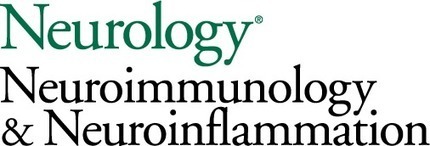


 Your new post is loading...
Your new post is loading...
